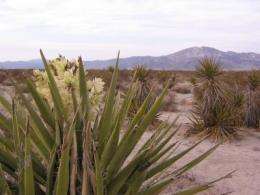Species distribution models can exaggerate differences in environmental requirements

Separate species that live in radically different environments don't necessarily also have different ecological niches. This is the finding of a study investigating the accuracy of current statistical tests that use models of geographic distributions to infer changes in environmental requirements.
In a new study published in the journal Systematic Biology, a model simulating the distributions of two imaginary species with identical environmental requirements, or ecological niches, was created. The model was tested to determine whether a variety of ecological niche modeling methods would correctly infer that the environmental requirements of the two species were identical. In cases where environments were similar or only moderately different, many tests correctly inferred that the environmental requirements of two species were identical, but in the case of radically different environments, the results were biased toward suggesting different environmental requirements.
"If you have two separate populations that occupy different environments, what the study shows is that under some conditions, that observation is really useful and strongly suggests, for example, that you could re-introduce one population into the range of another," said the study's author William Godsoe, a postdoctoral fellow at the National Institute for Mathematical and Biological Synthesis (NIMBioS), an NSF-supported math and biology institute at the University of Tennessee, Knoxville.
"But the fact that the two populations live in different environments could be a trivial observation and lead to erroneous conclusions. For example, you might infer that the two populations have different environmental requirements, suggesting that reintroducing one species into the other wouldn't work, when in fact it could," Godsoe said.

The findings have important implications for understanding the relationship between the environmental requirements of a species—its niche—and its geographic distribution.
"There is a growing interest in using data on the geographic distributions of a species. This study clarifies the conditions under which distribution data can mislead us, and in the future, this might help us make better management decisions about a species," Godsoe explained.
More information: Godsoe W. 2010. Regional Variation Exaggerates Ecological Divergence in Niche Models. Systematic Biology 59: 298-306. sysbio.oxfordjournals.org/cgi/ … nt/abstract/59/3/298
Provided by National Institute for Mathematical and Biological Synthesis (NIMBioS)














